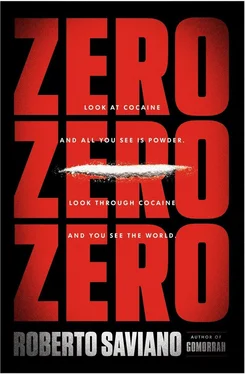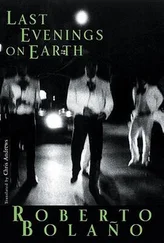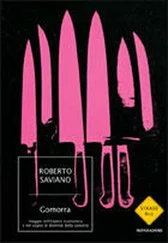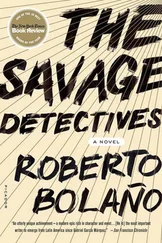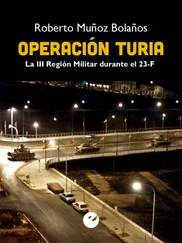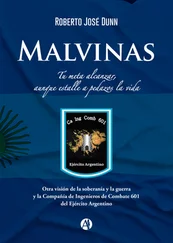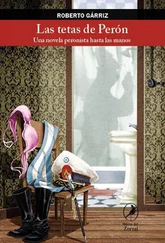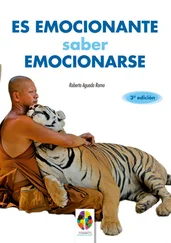He did his military service in the Israeli navy, but his height — six feet three inches — and pumped-up muscles weren’t enough for him to pass the test and fulfill his big dream of becoming an officer.
In the early 1980s he moves to East Berlin. A contact of his offers to provide him with a diploma in medicine that would fool everybody. Tarzan ends up instead with a humble dental technician degree, but it takes more than a piece of paper to make dentures and braces, as many unlucky German dentists quickly discover. At that point all he can do is to join his fellow mafiosi, and he specializes in fraud and forgery. Then he moves to Brooklyn and opens a video rental store in Brighton Beach. He marries a “pure-blooded mafia girl,” as they say in Russia: Her grandfather was a mafioso in Russia, and so was her first husband. In the United States Tarzan helps his childhood friend Griša “the Cannibal” Roizis, boss of a group of Russians in Brooklyn, to run some furniture stores that are really a front for international heroin trafficking, which also involves the Gambino and Genovese families. He also becomes friends with some higher-ups in the Colombo family. But when things in Brighton Beach start getting too shaky and several of his friends are killed, Tarzan decides to leave. In 1990 he moves to Miami, which has the second biggest group of Russian mafiosi in America. Since the 1970s many Russian immigrants there have been involved in extortion, drugs, gambling, prostitution, gem trading, and bank fraud. Tarzan starts several businesses in Florida, including Porky’s, a strip club whose slogan is “ Get lost in the land of love. ” In reality there’s not much love going on there: The FBI, which was keeping a watch on Tarzan from a rooftop across the street, immortalize him on video while he beats up some of his dancers outside the club.
The dancers don’t get a regular paycheck; they live on tips and percentages on drink orders, which are constantly being lowered. Tarzan boasts that all he has to do is point at a woman in any adult magazine for his agent to call her and bring her to the club, where Tarzan fucks her till she drops.
Porky’s becomes the place where — between slugs of vodka and a striptease — Russians and Colombian narcos or their go-betweens gather for meetings. Among Tarzan’s many friends are guys like Fernando Birbragher, a Colombian on excellent terms with both the Cali cartel, for which he recycled more than $50 million in the early 1980s, and Pablo Escobar, for whom he purchased yachts and sports cars. Then there’s Juan Almeida, one of the biggest traffickers of Colombian cocaine in Florida, who keeps in contact with the Colombian cartels through a luxury car rental agency in Miami and other cover businesses. Almeida and Tarzan live the good life aboard their yachts, and every now and then they decide out of the blue to take a helicopter to Cancún for lunch, to eat a plate of mariscos .
Women, success, money. Tarzan has them, but the sea still calls to him, the sea that since his childhood in Odessa has meant space, possibility. It still rankles him that he wasn’t accepted into the naval academy. Well, if the sea doesn’t want him, he’ll conquer the sea. His plan: procure a Soviet Tango class submarine for the Colombian narcos. Tarzan is a huge admirer of old Tango submarines. He’s followed the history of their construction from afar and knows they’ve made some really amazing improvements: increased firepower and open ocean operation capacity. Sure, with time, even these supermodern subs were surpassed. But Tarzan fell in love with them, and there’s no ruling the heart. The problem is that Tarzan is a boastful blabbermouth. One day at the Babushka, another one of his restaurants in Miami, his friend Griša Roizis introduces him to Aleksandr Jasevic, an arms dealer and heroin trafficker who is actually an undercover DEA agent. Tarzan doesn’t know that his friend is also collaborating with the DEA. A couple of courses and a few vodkas into their meal, he’s already told them about his ties to the Colombian narcos and the deals he’s doing for them, including the submarine.
Cannibal Roizis would later become a reference point for penniless young Italian couples. Near Naples, where he moves following his collaboration with the DEA, he opens a furniture store whose selling point is super low prices: full kitchens and living rooms within everyone’s means. There’s a line outside his store: engaged couples ready to make the big leap who unknowingly help launder the Cannibal’s dirty money while furnishing their future love nests. He’s making deals with the Italian Mafia with one hand while he’s still collaborating with the DEA with the other. Cannibal has always liked the smell of sawdust, so much so that he sets up his own office just a few yards from the loading dock where the Russians he’d brought with him unload furniture and appliances day and night. He’s even had a desk made for himself out of simple plywood. Everyone who deals with him is fascinated by his tic: He rubs his palm voluptuously across the wooden surface and then holds his fingers to his nose. He tells his most loyal men that the intoxicating aroma reminds him of his childhood. Another thing he really enjoys is screwing over honest Russians working in Italy. He’ll shake down plenty of Russian entrepreneurs until the Italian police manage to reconstruct his movements and nab him in Bologna, charging him with mafia association.
But to get back to the submarine deal: Tarzan’s lawyer insists that his client is simply a braggart, someone who loves boasting about things that he couldn’t possibly really do or provide. For the investigators, however, it was further proof of an alliance between criminal organizations of the former Soviet Union and the Colombian narcos: The narcos would supply the Russians with cocaine to transport to and distribute in Europe while the Russians would guarantee the Colombians arms and launder narco-dollars for them, especially in Miami, New York, and Puerto Rico. Tarzan’s businesses were decisive in creating a link between the Mafija and the Colombian cartels. Though the submarine deal was never finalized, others during that same time were. Deals like the 100 kilos of cocaine hidden in crates of freeze-dried shrimp from Ecuador and destined for St. Petersburg, or the fleet of MI-8 Soviet army helicopters that Juan Almeida wanted so badly: Tarzan helped him acquire them for the modest price of $1 million each. “Escobar’s men are going to fly these,” Tarzan would apparently say. “So we had to gut the whole interior, get rid of the seats, find a thousand ways to stuff in as much coke as possible.”
His criminal activities in Florida didn’t show a lack of ambition. He owned immense cannabis fields in the Everglades, with an airstrip in the middle for landing loads of Jamaican marijuana.
Tarzan was charged with thirty counts, including criminal association, arms trafficking, and fraudulent data transmission. He risked spending the rest of his life behind bars but decided to negotiate with the American justice system. In exchange for testifying against Almeida and providing information about some Mafija big shots, all charges against him were dropped except for extortion. In the end he was only sentenced to thirty-three months in prison, after which he was extradited to Israel. All he had left was a few hundred dollars, a pale mirage of the vast fortune he had built in nearly two decades of life in America.
• • •
Tarzan’s tale is the tip of the iceberg that is the story of the Mafija’s growing interest in drug trafficking. Before the fall of communism the Soviet Union played only a marginal role in the distribution chain and in consumption. But in the years following it the demand for drugs in Russia grew consistently. What’s so amazing is the speed with which it has grown, especially among the young. Because heroin is relatively affordable, consumption in Western Europe had always been associated with conditions of marginalization. But in Russia young people of all social classes began using it, not just the poor or down-and-out. It became an unstoppable wave that expanded the market to the most remote parts of the country. The variety of drugs expanded as well: to get high or to forget their problems, Russian users now had access to any and every substance, just like any American or European kid.
Читать дальше
